Breaking Down the Types and Unique Qualities of Each Vocal Range


Are you curious about your vocal range and how they affect your singing? Understanding the different types of vocal ranges can enhance your music experience, whether you’re a performer or a listener. This article will cover the significance of vocal range, how it’s classified, and tips for recognizing different ranges through listening. By engaging with this content, you’ll gain insights that can help you identify your own vocal range and appreciate the varied voices in music. Let’s tackle common misconceptions and explore the fascinating spectrum of vocal ranges together.
Defining Vocal Range and Its Significance

Vocal range refers to the span of pitches a singer can produce, from the lowest to the highest note. Understanding your vocal range helps you identify which notes you can sing comfortably using your chest voice or head voice. This knowledge is crucial for selecting appropriate songs that fit within your range.
Different vocal ranges are categorized into classifications such as soprano, alto, tenor, and bass, each encompassing distinct pitches. Knowing your specific range not only aids in performance but also enhances your ability to read music written in various clefs. This understanding is particularly important for those interested in classical music, where vocal clarity and precision matter significantly.
Pitch stability is vital for singers aiming to deliver accurate and consistent performances. Vocal range includes both phonation, or sound production, and the ability to adjust pitch. This dual aspect is beneficial in music settings, allowing you to express a broader emotional palette through your voice.
Ultimately, defining your vocal range empowers you as a singer. It provides a clear framework for developing your skills and expanding your repertoire. By understanding your unique range and the associated techniques, you cultivate a more effective singing style that resonates with audiences, whether in solo performances or group settings.
The Spectrum of Vocal Ranges

Understanding the different types of vocal ranges enables you to identify your unique capabilities. You’ll learn about soprano characteristics and the traits of altos, which highlight their distinct qualities. You’ll also find insights into the tenor range, the overview of baritone attributes, and the qualities that define bass voices, all linked to how your larynx and vocal cords function at various scales.
Understanding Soprano and Its Characteristics
Soprano is a prominent voice type characterized by a bright, high range that typically spans from middle C to high C and beyond. If you are a soprano, you may find enjoyment in singing classical pieces or even exploring genres like rock music, where your vocal agility can shine. To maximize your vocal potential, working with a voice teacher who specializes in vocal pedagogy can be greatly beneficial, providing you with tailored techniques to enhance your performance.
In vocal pedagogy, understanding the soprano’s unique qualities sets the stage for effective singing. Soprano voices often have the ability to execute swift runs and high notes with clarity, a skill that can be developed further by focusing on breath support and resonance. Additionally, recognizing the role of the vocal fry register can help you understand how to mix different vocal techniques, adding depth and variety to your music, whether performing in a choir or as a solo artist.
Exploring Alto Vocal Traits
The alto voice type is defined by its rich and warm timbre, typically spanning from the F below middle C (F3) to the second D above middle C (D5) in scientific pitch notation. Many altos find themselves resonating well with more grounded melodies, making them crucial in choral arrangements and ensembles where harmony plays a key role. If you’re an alto, leveraging this aspect of your voice can aid in creating a fuller sound that enhances your overall performance.
Within the alto range, contralto voices stand out due to their ability to produce deep, expressive tones. Engaging in speech exercises can help you develop control over your breath and expand your vocal flexibility, which is vital for both solo and group singing. By working with a vocal coach to refine these traits, you can unlock your unique vocal qualities while effectively addressing any challenges related to pitch stability and vocal presence.
Defining Tenor and Its Unique Aspects
The tenor voice type is defined by its higher pitch range, typically spanning from the C one octave below middle C to the C above it, a span of around two octaves. Understanding your tenor tessitura, or the most comfortable singing range, allows you to choose pieces that highlight your strengths. Many tenors can also explore the whistle register, which enables them to reach extreme high notes that add texture and complexity to their performances.
In musical notation, tenors often sing in the treble clef, making it essential to familiarize yourself with reading music in this format for effective practice. The ability to navigate semitones is important for developing your pitch accuracy and embracing different musical styles. By honing these skills, you will enhance both your performance capabilities and your enjoyment of various musical genres, whether in a chorus or a solo context.
The Baritone Vocal Range Overview
The baritone vocal range sits between the bass and tenor ranges, typically spanning from the second G below middle C to the G above it. With a rich and robust quality, baritones can effectively tackle various musical pieces, including operatic roles that require strong character depth. If you’re exploring your baritone capabilities, consider conducting a vocal range test to identify your unique strengths and the weight of your voice, which can help determine suitable repertoire.
Baritones often have the ability to execute belting techniques, which allows for powerful singing without strain. Engaging with diverse composers’ works can enrich your performance opportunities, as many pieces are specifically written to showcase baritone voices. By mastering your range and understanding the nuances that separate a baritone from a coloratura soprano, you empower yourself as a versatile singer, ready to take on a variety of musical genres with confidence.
Insights Into Bass Vocal Qualities
The bass vocal range is characterized by its depth and richness, often spanning from the E two octaves below middle C up to the E above. This range provides a strong foundation in choral music, where basses are crucial in creating harmony. If you identify with the bass fach, you can further enhance your skills by studying music theory, which will improve your understanding of harmony and how your voice interacts with other parts, including countertenor lines in pieces like “The Magic Flute“.
In addition to the traditional bass sound, you might draw inspiration from famous bass performers like Barry White, whose unique vocal quality showcases the potential of this voice type. By focusing on breath control and resonance, you can develop the ability to deliver powerful performances that captivate your audience. Engaging in dedicated practice and vocal exercises tailored for bass singers will allow you to fully harness your vocal strength and expressiveness, enriching your overall musical experience.
How Vocal Ranges Are Classified

Understanding vocal range classification involves exploring key concepts such as the role of fach in vocal classification, which helps categorize voice types in classical music. You will also learn about popular music vocal ranges and their distinct categories. Additionally, gender differences in vocal range classification reveal how the human voice can vary widely, influencing melody and texture. This groundwork will set you up for insights into specific voice types and techniques, including falsetto, providing a comprehensive understanding of vocal capabilities.
The Role of Fach in Vocal Classification
The role of fach in vocal classification is crucial for singers aiming to identify their voice type within both classical and contemporary settings. By understanding this framework, you can find out your vocal range and better match your abilities with appropriate repertoire. For example, a soprano may excel in bright musical notes suited for choir performances, while a baritone might resonate more with deeper harmonies in pop music.
Fach helps delineate not just range but also the unique qualities of each voice type, ensuring that singers can navigate various styles effectively. This knowledge empowers you to choose songs that highlight your strengths, enhancing both your confidence and resonance on stage. By embracing your specific fach, you will strengthen your vocal presence and enrich your overall singing experience.
Overview of Voice Types in Classical Music
In classical music, voice types are crucial for understanding how singers can best utilize their vocal capabilities. Each type, such as soprano, alto, tenor, and bass, offers a unique tone with its specific range and interval quality. For instance, coloratura sopranos are known for their agility and ability to navigate complex passages, while altos provide rich harmonies. Recognizing these distinctions helps you select roles and repertoire that showcase your strengths, particularly during challenging passages known as passaggios, where vocal transitions can be intricate.
By familiarizing yourself with the characteristics of each voice type, you gain insight into effective vocal techniques and training strategies. For example, working on breath control and resonance can significantly improve your performance regardless of whether you identify as a tenor or a baritone. Understanding how voice types operate within classical frameworks ensures you can engage with both ensemble and solo opportunities effectively, enhancing your overall singing experience.
Popular Music Vocal Ranges and Their Categories
Popular music features various vocal ranges that reflect the unique qualities of different artists. For example, Idina Menzel is known for her powerful soprano range, which spans several octaves and showcases her exceptional vocal weight. Understanding these vocal ranges helps you appreciate the versatility of singers and select songs that align with your own vocal abilities.
Each singer’s vocal range is classified into categories such as soprano, alto, tenor, and bass, with each type bringing distinct characteristics to the music. Recognizing your vocal range allows you to choose songs that fit your pitch and style, enhancing your performance. By analyzing artists like Menzel, you can gain insights into how different vocal weights affect the overall sound and emotional impact of a song.
Gender Differences in Vocal Range Classification
Gender differences in vocal range classification are significant in both classical and contemporary music. Generally, male voices are categorized as tenor, baritone, or bass, while female voices fall under soprano, mezzo-soprano, or contralto. Understanding these classifications enables you to select music that resonates with your vocal capabilities, helping you to perform confidently in various settings.
Each gender-specific classification aligns with unique vocal qualities and pitch ranges. For instance, tenors typically sing higher pitches compared to baritones, while sopranos are known for their ability to hit bright, high notes. Recognizing your vocal classification boosts your ability to choose appropriate repertoire that showcases your strengths, enhancing your overall performance experience.
Recognizing Vocal Range Through Listening

Identifying vocal ranges in famous singers can enhance your understanding of different voice types. By analyzing their distinct qualities, you can develop skills to distinguish between various categories such as soprano, alto, tenor, and bass. Moreover, recognizing how genre influences vocal ranges allows you to appreciate the versatility of singers across musical genres, enriching your own vocal journey.
Identifying Vocal Ranges in Famous Singers
To effectively identify vocal ranges in famous singers, you can start by listening to their most well-known songs. For example, when you hear Beyonce, her powerful soprano range is evident through her ability to seamlessly hit high notes while maintaining emotional depth. Recognizing these qualities will help you better understand how vocal types differ and how they relate to your own voice.
Analyzing artists like Adele, whose rich contralto tones emphasize a lower pitch range, provides insight into how diverse vocal types can express different emotions. By paying attention to these distinctions in vocal performances, you can develop your skills in recognizing various voice types and apply this knowledge to your singing practice.
Skills for Distinguishing Different Voice Types
To effectively distinguish between different voice types, it is essential to listen closely to the tonal qualities of each singer. Focus on how they navigate their vocal range, noting whether they resonate more with higher pitches, like sopranos, or deeper tones, like basses. By practicing active listening, you will enhance your ability to identify unique vocal characteristics that define various ranges.
Additionally, familiarize yourself with vocal techniques used by singers across genres. Observing how a tenor projects their voice in a powerful belting section compared to the softer nuances of an alto can deepen your understanding. This awareness not only aids in recognizing voice types but also supports your own vocal development by encouraging you to adopt effective techniques from those you admire.
The Impact of Genre on Vocal Ranges
Genre plays a significant role in shaping vocal ranges, as different musical styles often require unique vocal techniques and expressions. For instance, pop music typically emphasizes higher pitches and vocal agility, showcasing the talents of sopranos and tenors. On the other hand, genres like country or jazz may favor richer tones, giving prominence to altos and baritones, allowing for a heavier emotional delivery.
As you listen to various music styles, pay attention to how singers adapt their vocal qualities to fit their genre. A rock singer might utilize a powerful belt to convey intensity, while a classical vocalist would focus on clarity and precision in their high notes. Understanding these nuances helps you appreciate the versatility of voice types and informs your singing choices, ultimately allowing you to expand your own repertoire effectively.
Factors That Influence Vocal Range

Your vocal range is influenced by several key factors. The role of physical anatomy, including the structure of your vocal cords and larynx, plays a significant part in determining your capabilities. Training and development through techniques and practice can enhance your voice. Additionally, health and lifestyle choices directly impact your vocal performance. Each of these aspects will be explored in more detail to help you understand how to maximize your vocal potential.
The Role of Physical Anatomy
Your vocal range is intrinsically linked to your physical anatomy, particularly the structure of your vocal cords and larynx. If you consider how these components function, you’ll see that thicker and longer vocal cords typically produce deeper tones, while shorter, thinner cords enable higher pitches. Understanding your physical attributes can help you set realistic vocal goals and guide your training to optimize your specific vocal capabilities.
Maintaining vocal health is also crucial for your performance. The condition of your larynx and related structures can influence your ability to access your full range. Engaging in regular vocal exercises and following best practices for vocal care can improve your endurance and overall sound quality. By being mindful of how your anatomy impacts your singing, you can make informed decisions that enhance your vocal performance.
Training and Development of Vocal Ability
Training and development play a significant role in enhancing your vocal ability and expanding your vocal range. Engaging in consistent vocal exercises helps strengthen your vocal cords and improve your pitch accuracy. If you spend time working with a vocal coach or participating in group singing sessions, you can learn techniques that refine your breath support and resonance, leading to better control of your voice.
Your dedicated practice can make a noticeable difference in your singing capabilities. By focusing on specific exercises designed for your voice type, you can efficiently work on areas where you feel less confident. This targeted approach not only builds your overall vocal strength but also enables you to discover new notes within your range, ultimately enhancing your performance experience and enjoyment of music.
Health and Lifestyle Impacts on Vocal Range
Your health and lifestyle choices significantly influence your vocal range and overall performance. Factors like hydration, diet, and sleep play essential roles in maintaining vocal clarity and stamina. Drinking enough water keeps your vocal cords lubricated, while proper nutrition helps support muscle function, allowing for better vocal control.
Additionally, habits such as smoking or excessive alcohol consumption can hinder your vocal quality. Engaging in regular exercise can improve breath control and lung capacity, further enhancing your singing abilities. By prioritizing your health, you create the ideal conditions for expanding your vocal range and achieving your best performance.
Enhancing Your Understanding of Vocal Ranges

To effectively enhance your understanding of vocal ranges, it’s essential to explore effective methods for expanding vocal range, which can empower you to reach new heights in singing. You’ll also learn vocal techniques for strengthening your range, helping you build confidence and skill. Finally, we’ll provide valuable resources for further learning on different vocal types, supporting your journey to becoming a more versatile singer.
Effective Methods for Expanding Vocal Range
To expand your vocal range effectively, focus on consistent vocal exercises that strengthen your vocal cords and improve pitch control. Daily warm-ups, such as lip trills and sirens, can help you gradually extend your range. Integrating scales and arpeggios into your practice will also enhance your vocal flexibility and agility, allowing you to hit both high and low notes with ease.
Additionally, consider working with a qualified vocal coach who can provide personalized guidance tailored to your specific needs. They can help you identify areas for improvement and teach you techniques that enhance breath support and resonance. As you progress, pay attention to how different singing styles require unique approaches; this awareness will assist you in building a well-rounded vocal capability.
Vocal Techniques for Strengthening Range
To enhance your vocal range effectively, focus on performing scales and arpeggios regularly. These exercises can help strengthen your vocal cords and improve pitch accuracy, allowing you to access both higher and lower notes with ease. As you practice, pay attention to breath support, which is essential for sustaining longer phrases and transitioning smoothly between different pitches.
Incorporating warm-up techniques, such as lip trills and sirens, into your daily routine can significantly increase your vocal flexibility. These methods reduce tension in your larynx and promote better resonance, helping you to navigate your range more comfortably. By committing to consistent practice and exploring various techniques, you will find that your ability to express different vocal types improves while you explore the depths of your unique vocal capabilities.
Resources for Further Learning on Vocal Types
To deepen your understanding of vocal types, consider utilizing online platforms like YouTube, where many professional singers and vocal coaches share instructional videos on techniques associated with different vocal ranges. By observing their approaches, you can gain valuable insights into how to effectively apply vocal exercises tailored to your specific voice type. Engaging with a variety of perspectives will empower you to explore new techniques that enhance your skills as a singer.
Another excellent resource for expanding your knowledge is vocal workshops and masterclasses, where you can learn directly from experienced instructors. Participating in these interactive sessions allows you to receive personalized feedback while connecting with fellow singers who share your passion for different vocal ranges. This collaborative learning environment not only enhances your technical abilities but also fosters a supportive community that encourages your growth as a performer.
Conclusion
Understanding the different types of vocal ranges is crucial for any singer aiming to enhance their performance and artistic expression. By recognizing the unique characteristics of soprano, alto, tenor, baritone, and bass voices, you can select repertoire that aligns with your abilities and showcases your strengths. This knowledge empowers you to explore various musical styles confidently, fostering a more versatile and well-rounded singing experience. Ultimately, embracing your vocal range not only enriches your personal journey but also connects you more deeply with the music you love.






